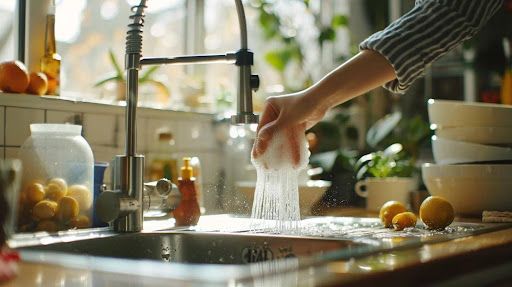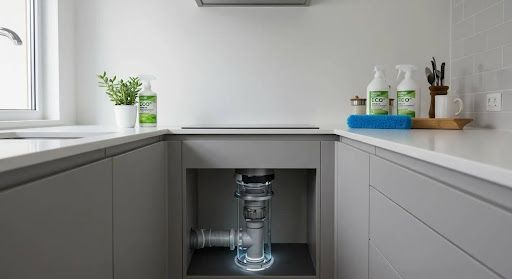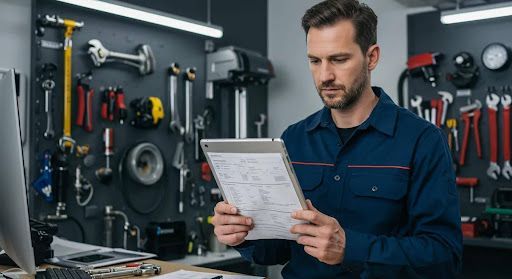How to Unclog the Drainage: Effective DIY and Professional Solutions for Clear Drains
When clogged drains affect comfort and functionality, knowing how to unclog a drain can save time and money. This comprehensive guide explains common causes of clogs, step-by-step DIY methods, when to seek professional help, and prevention tips. We also compare top drain cleaning products to help you restore optimal drainage in your home or business.
Common Causes of Drain Clogs
Drain clogs are most often caused by the buildup of hair, grease, and food waste. Kitchen sink drains become blocked by oils and food particles, while bathroom drains are hindered by hair and soap scum. Over time, these substances mix with debris and mineral deposits from hard water, obstructing the pipe system. Signs include slow drainage, unpleasant odors, and gurgling sounds that indicate a clogged drain.
Substances That Most Often Block Kitchen and Bathroom Drains
Food particles, grease, soap residue, and hair combine with mineral deposits to form a barrier in the pipes. Small solid waste materials accumulate over time, narrowing the drain passages and affecting the entire drain line.
Hair, Grease, and Food Waste Affect Drainage
Hair clings to pipe walls and tangles, while grease hardens into sticky deposits. Food waste decomposes and mixes with other particles, blocking water flow and causing backups throughout the drainage system.
Signs and Symptoms of Clogged Drains
Common signs include water backups, slow drainage, foul odors, and gurgling sounds. Severe clogs may cause water to rise above normal levels and affect multiple drains at once, indicating problems deeper in the drain line.
How Can You
Unclog a
Drain Yourself? Step-by-Step DIY Methods

DIY methods are an affordable first step. Simple tools and common household items such as plungers and natural mixtures can often solve minor clogs effectively without requiring commercial drain cleaners.
Simple and Safe Techniques to Unclog a Kitchen Sink
Clear any standing water and debris from the sink area. Use a plunger to create suction over the sink drain opening. If necessary, pour a mixture of sodium bicarbonate (baking soda) and vinegar into the drain to break down grease and food residue through a natural chemical reaction, then flush with boiling water after 15–20 minutes.
How to Unclog a Shower Drain
Remove the drain cover using a wrench if needed, and extract any visible hair buildup using a drain snake or bent wire hanger. This method addresses the common challenge of how do you unclog a shower drain or how do i unclog my shower drain. Flush with hot water to dissolve any remaining soap residue and soap scum.
How to Unclog a Toilet Without a Plumber
Place a heavy-duty plunger over the toilet drain and plunge firmly until the water clears. For stubborn clogs, use a toilet auger designed for round drains. Always wear gloves and use a towel to protect surfaces while avoiding damage to porcelain fixtures.
Effective Methods for Shower Drain Maintenance
Remove the drain cover and extract visible hair with your hands or tools. Use a drain snake or wire brush to remove finer particles from the pipe. Rinse with hot water and, if needed, apply an enzyme-based cleaner to dissolve soap scum and prevent future buildup.
The combination of plungers, drain snakes, and natural cleaners like sodium bicarbonate and vinegar proves effective for most clogs. Enzyme drain cleaners offer a safe alternative to harsh chemical drain cleaners, breaking down organic debris and preventing recurring clogs without causing corrosion to your plumbing system.
When to Call a Professional Plumber for Drain Unclogging
DIY methods can resolve minor clogs, but persistent problems affecting multiple drains require professional help. Deep clogs in the main drain line often need expert intervention with advanced tools like hydro-jetters and diagnostic cameras.
Signs That a Drain Clog Requires Expert Service
Call a plumber if backups continue despite repeated efforts, foul smells persist, or water damage is observed. Slow drainage in several areas suggests a blockage deeper in the plumbing system that standard methods cannot reach.
Professionals use techniques such as snaking, hydro-jetting, and video inspections to thoroughly clear clogs and detect weak points. They handle complex issues involving the septic tank system and offer preventive treatments to reduce future clogs.
How Professionals Diagnose and Inspect Drain Clogs
Experts deploy diagnostic cameras to view pipe interiors, assess clog severity, and determine blockage composition. This targeted approach enables efficient, effective cleaning while identifying potential leak points or corrosion issues.
Emergency Drain Unclogging Services Offered 24/7
Many plumbing companies offer around-the-clock emergency services. Quick response to overflowing toilets or flooded basements minimizes water damage and restores function promptly, protecting your home improvement investments.
How Can You Prevent Drain Clogs and Maintain Clear Drainage?

Preventative maintenance is key to avoiding costly clogs. Regular cleaning and mindful usage extend the lifespan of your drainage system while using eco-friendly, low-toxic products benefits both your home and the environment.
Best Practices for Regular Drain Maintenance
Flush drains periodically with boiling water and natural enzyme cleaners. Install drain screens to catch hair and debris, and avoid pouring grease or heavy food particles down the sink. Regular maintenance prevents the need to frequently unclog drains.
Eco-Friendly Cleaning Solutions
Eco-friendly, enzyme-based cleaners and mixtures of sodium bicarbonate with vinegar break down organic matter naturally through beneficial bacteria action, keeping the plumbing system healthy and clog-free without harsh chemicals.
Recommended Maintenance Frequency
For residential use, cleaning drains every three to six months is advisable. High-traffic areas might require monthly maintenance to keep drains clear and prevent the accumulation of plastic debris and other waste materials.
Best Drain Cleaning Products and Tools on the Market
Selecting reliable products is crucial for effective maintenance. Both manual tools and chemical-free cleaners have proven effective without damaging pipes or causing harmful chemical reactions.
Top Chemical Drain Cleaners to Use
Chemical drain cleaners containing sodium hydroxide and acid-based formulas act quickly to dissolve clogs. Use these liquid cleaners sparingly with proper safety gear to avoid chemical burns and corrosion. Always follow manufacturer's instructions and ensure adequate ventilation when using these products.
Enzyme Drain Cleaners
Enzyme cleaners use natural bacteria to digest organic debris, making them ideal for preventative maintenance over time rather than immediate severe clogs. These biological cleaners work safely without damaging pipes or creating harmful chemical reactions.
Where to Purchase Drain Cleaning Products
These products are available from reputable online retailers, home improvement stores, or specialized plumbing supply companies. Always review product ratings and user feedback before purchasing to ensure effectiveness for your specific drainage needs.
How Much Does It Cost to Unclog a Drain Professionally?

Professional drain cleaning prices vary with clog complexity. Minor blockages might range from $100 to $250, while more difficult clogs can cost upward of $500. Detailed quotes are recommended before service begins.
Factors That Influence Drain Unclogging Service Costs
Cost factors include the clog's location, cleaning method used, and whether additional repairs are needed. Advanced diagnostics for complex issues may raise overall expenses, especially when dealing with roof drainage systems or septic tank complications.
DIY Costs Compared to Professional Service Fees
DIY methods are generally inexpensive, often under $50 for supplies including drain openers and basic tools. However, persistent clogs that lead to damage might make professional services more cost-effective in the long run.
How Long Does It Take to Unclog a Drain?
Most clogs clear within 15 to 30 minutes using DIY methods, unless the blockage is severe.
| Product Type | Function | Typical Cost | Key Benefit |
|---|---|---|---|
| Drain Snake | Manual removal of solids | $20–$50 | Effective for hair and minor debris blockages |
| Enzyme Drain Cleaner | Biological breakdown of organic matter | $10–$30 | Eco-friendly and prevents future buildup |
| Chemical Drain Cleaner | Rapid chemical reaction to dissolve clogs | $15–$40 | Fast-acting but requires caution to avoid damage |
Before purchasing, review product specifications to ensure the tool meets your drain cleaning needs.
Final Thoughts
Clear, functioning drains are essential for residential comfort and commercial efficiency. By understanding common clog causes, applying proven DIY methods, and knowing when to call a professional, you can maintain a healthy drainage system. Regular maintenance using eco-friendly products not only prevents future clogs but also extends your pipes' lifespan while protecting against corrosion and leak development.
For persistent issues involving complex drainage systems, septic tanks, or roof drainage problems, contact the expert team at Cardona Construction for reliable drainage services and professional home improvement solutions.
